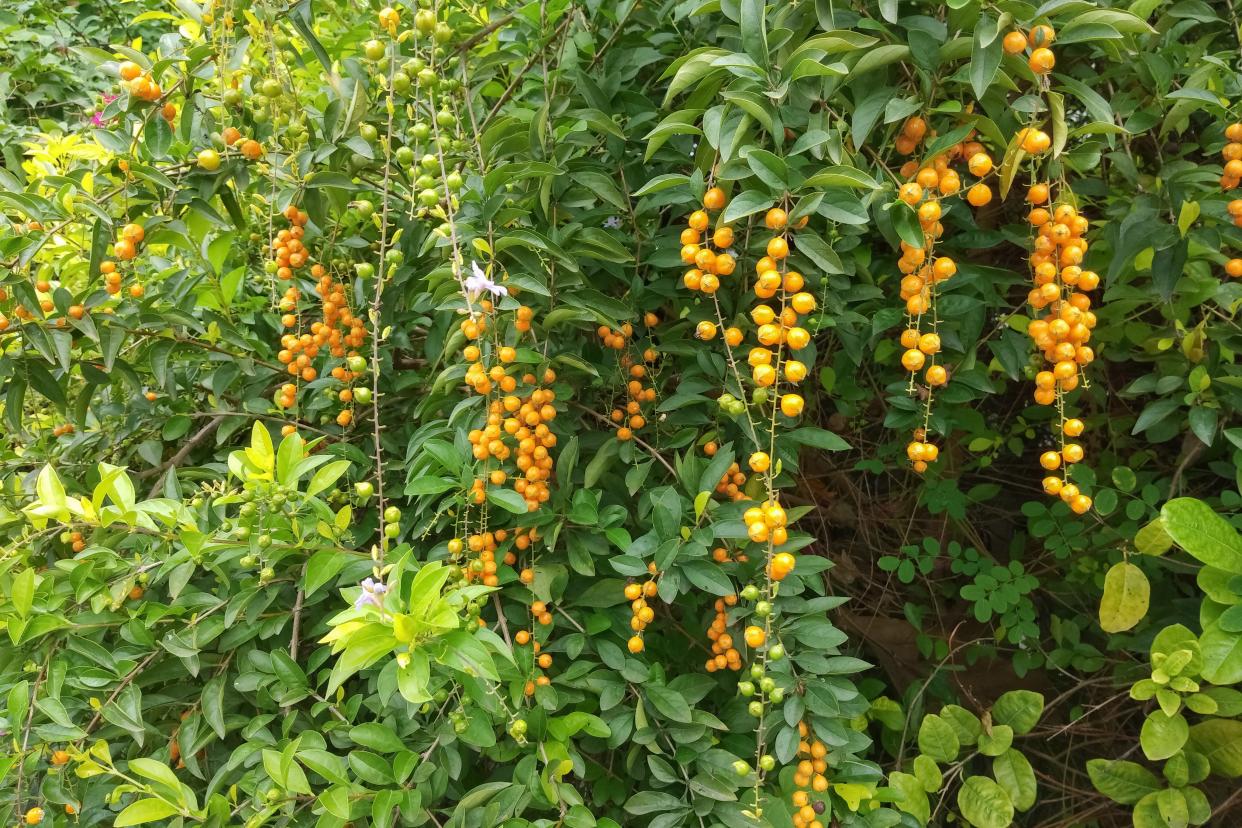CHARLES REYNOLDS: Is that plant native or exotic?

What makes a plant native? A not totally satisfying definition says a native is a species growing here before Europeans arrived. But it’s hard to accept that every plant on every Key and remote islet was noticed and described by someone competent to do so. Perhaps that’s why there’s disagreement on the status of certain species.
Take golden dewdrop, for example. This excellent shrub (Duranta erecta) is designated as nonnative in ‘’The Florida-Friendly Landscaping Guide,’’ published by the University of Florida. In contrast, however, it’s called ‘’possibly’’ native in ‘’Your Florida Guide to Shrubs,’’ also a University of Florida publication. Garden writer Kirsten Llamas has a different take, declaring that golden dewdrop ranges naturally from Mexico and the West Indies to South America. A variegated form of golden dewdrop has become extremely popular. It’s frequently kept sheared, though, destroying much of its natural beauty.
Also creating a point of contention, though one much less pronounced, is Spanish bayonet. Most gardening guides that include this species (Yucca aloifolia) describe it as unquestionably native. But a ranger at Everglades National Park told me she and her colleagues had been taught that this formidably armed plant was introduced and, in her estimation, was a weed.
A just possibly native plant that arouses considerable animosity is lantana (L. camara). It’s hated by agricultural interests because it invades their fields and groves, and — inexplicably — it’s disliked by much of the general public because it ‘’grows like a weed’’ along roadsides. But this pretty, flowering shrub is here to stay.
Ranging from 2 to 8 feet tall, lantana flaunts red-and-yellow, all-yellow or yellow-and-pink blossoms throughout the warm season. But where did the species originate? Kirsten Llamas, in ‘’Tropical Flowering Plants,’’ declares lantana camara’s homeland as ‘’obscure,’’ narrowing it down only to the American tropics. Indeed, a horticulturist I chatted with at The Kampong in Coral Gables laughed, saying ‘’Of all the plants to label an exotic weed, lantana is the last one I’d pick. All it would take to establish it here is one bird flying over from the Bahamas after eating some fruit.’’
Which is very likely what happened. But it did happen before or after folks of European ancestry settled in Florida? No one can be sure. If you want to grow lantana plants with a clear conscience, try purple trailing lantana or one of several sterile hybrids of lantana camara, which bear yellow, pink or white flowers that attract bees.
Charles Reynolds, a Winter Haven resident, has an associate’s degree in horticulture and is a member of Garden Writers Association of America. He can be reached at ballroom16@ aol.com
This article originally appeared on The Ledger: CLIPPINGS

